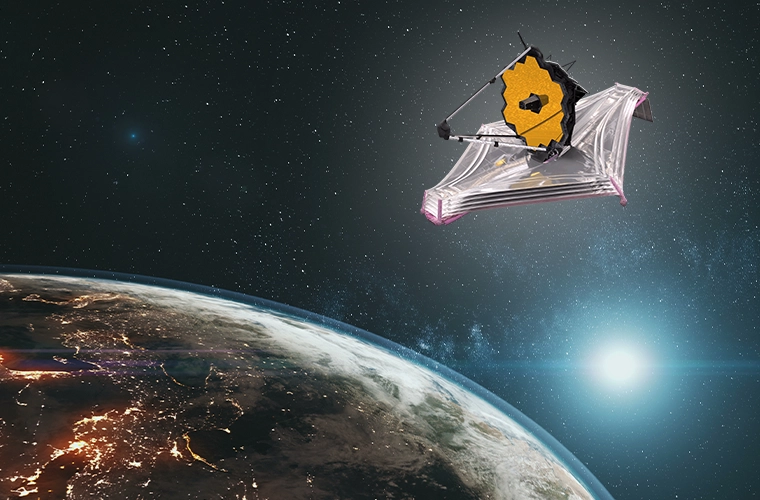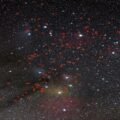The search for extraterrestrial life is one of humanity’s most profound quests, and NASA’s James Webb Space Telescope (JWST) stands at the forefront of this exploration.
However, despite being the most sophisticated space telescope ever built, NASA scientists recently discussed the monumental challenges James Webb faces in identifying definitive signs of life beyond our solar system.
“We currently know of around 30 planets that may be small, rocky planets like Earth and that orbit in the habitable zone,” Drs. Knicole Colón and Christopher Stark, project scientists at NASA’s Goddard Space Flight Center, explained in a recent NASA blog post. “However, there is no guarantee that a planet that orbits in the habitable zone actually is habitable (it could support life), let alone inhabited (it currently supports life).”
“At the time of writing, there is only one known habitable and inhabited planet – Earth!”
Exoplanets, planets that orbit stars outside our solar system, are abundant in our galaxy. Some of these planets reside in the “habitable zone“ of their stars, where conditions might be right for liquid water to exist—a crucial ingredient for life as we know it.
The JWST employs transmission spectroscopy to study exoplanet atmospheres. This method involves observing the starlight that passes through a planet’s atmosphere during transit, which can reveal its chemical composition. However, the process is fraught with difficulties.
“The potentially habitable worlds Webb is observing are all transiting exoplanets, meaning their orbits are nearly edge-on so that they pass in front of their host stars,“ the scientists note. “Webb takes advantage of this orientation to perform transmission spectroscopy when the planet passes in front of its star. This orientation allows us to examine the starlight filtered through the atmospheres of planets to learn about their chemical compositions. However, the amount of starlight blocked by the thin atmosphere of a small rocky planet is tiny, typically much smaller than 0.02%. Simply detecting an atmosphere around these small worlds is very challenging. Identifying the presence of water vapor, which may bolster the possibility of habitability, is even harder. Searching for biosignatures (biologically produced gases) is extraordinarily difficult, but also an exciting endeavor.”
Detecting biosignatures—specific chemicals that indicate the presence of life—is a complex task. For instance, observing LHS 1140 b, a super-Earth-size planet, presents significant challenges.
“Recent theoretical work exploring the detectability of gaseous molecules in the atmosphere of the super-Earth-size planet LHS 1140 b highlights several challenges in searching for biosignatures. The work notes approximately 10-50 transits of the planet around its host star, equivalent to 40-200 hours of observing time with Webb, would be needed to attempt a detection of potential biosignatures, such as ammonia, phosphine, chloromethane, and nitrous oxide, in the best-case scenario of a clear, cloud-free atmosphere,“ the scientists explain.
Significantly, JWST cannot observe the LHS 1140 b system year-round due to its position in the sky. Scientists say it could take years, if not decades, to perform 50 transit observations and accumulate the necessary data to determine the habitability of LHS 1140b.
Additionally, many small exoplanets have cloudy or hazy atmospheres that obscure the signals being searched for, meaning it could take even longer for researchers to conclusively detect the biosignatures of life on an exoplanet like LHS 1140 b.
Hycean planets, a newly theorized class of super-Earth-size planets with hydrogen-rich atmospheres and significant liquid water oceans, offer another potential avenue for detecting biosignatures.
The super-Earth K2-18b, located 124 light years away, has emerged as a promising Hycean planet candidate and potential habitable world. In a study published late last year, NASA announced the detection of methane and carbon dioxide on K2-18b.
Most intriguingly, researchers said they had also detected the presence of a molecule called dimethyl sulfide (DMS) on K2-18b. DMS, an organosulfur compound, is exclusively produced by living organisms on Earth.
“On Earth, DMS is only produced by life. The bulk of it in Earth’s atmosphere is emitted from phytoplankton in marine environments,“ lead study author and University of Cambridge professor Dr. Nikku Madhusudhan told the BBC. “If confirmed, it would be a huge deal, and I feel a responsibility to get this right if we are making such a big claim.“
The detection of DMS on K2-18b sparked significant public speculation that NASA was about to announce the confirmed existence of extraterrestrial life in the cosmos.
However, Dr. Colón and Dr. Stark note that the current data is too weak to conclusively determine the presence of DMS, and observations have failed to detect signs of water on K2-18b. NASA is hopeful that upcoming observations with Webb will shed more light on K2-18b’s potential to be a habitable Hycean planet.
Additionally, complicating the search for alien life and the study of exoplanet atmospheres with Webb is the possibility of water vapor originating from the host star. This scenario was observed on the rocky exoplanet GJ 486b, located 26 light years away. This overlap adds another layer of complexity to the already challenging task of confirming the presence of biosignatures.
“The detection of biosignatures in the atmospheres of small, potentially habitable transiting planets that orbit cool stars is an extremely challenging endeavor, typically requiring ideal conditions (e.g., cloud-free atmospheres) or assuming early Earth environments (i.e., different than modern Earth as we know it), the detection of signals significantly smaller than 200 parts per million, a well-behaved star without significant water vapor in star spots, and a significant amount of telescope time to reach sufficient signal-to-noise,“ the scientists explained.
Additionally, scientists caution that detecting a single biosignature will not constitute the discovery of alien life. Instead, confirming extraterrestrial life will likely require “a large set of unambiguously detected biosignatures, data from multiple missions and observatories, and extensive atmospheric modeling efforts.“ So, confirming alien life could take many years, even after initial detection.
Despite these challenges, NASA says JWST remains a powerful tool in the search for extraterrestrial life. Its sensitivity allows for detecting and characterizing the atmospheres of a few promising potentially habitable planets.
“The power of Webb is that it has the sensitivity to detect and begin to characterize the atmospheres of a handful of the most promising potentially habitable planets orbiting cool stars,“ Dr. Colón and Dr. Stark explained. “Webb particularly has the ability to detect a range of molecules important for life, like water vapor, methane, and carbon dioxide.“
“Our goal is to learn as much as we can about worlds that may be potentially habitable, even if we cannot definitively identify habitable signatures with Webb.“
“Webb observations, combined with exoplanet studies by NASA’s upcoming Nancy Grace Roman Space Telescope, will ultimately lay the foundation for the future Habitable Worlds Observatory, which will be NASA’s first mission purpose-built to directly image and search for chemical traces caused by life on Earth-like planets around Sun-like stars,“ the scientists conclude.
Ultimately, NASA says the ongoing efforts of NASA’s James Webb Space Telescope are paving the way for future discoveries. However, definitively finding proof of alien life remains a formidable challenge.
Of course, there is also a large segment of the population that believes the evidence for alien life is already here on Earth. Notably, last July, former intelligence official, and Air Force veteran David Grusch testified under oath to Congress that the U.S. government had recovered “biologics“ and technology from alleged crashes of craft of non-human origin.
In a recent interview, Dr. Lisa Kaltenegger, a professor of Astronomy at Cornell University who specializes in the characterization of exoplanets and the search for alien life, was asked about Grusch’s allegations.
“When I see that [testimony], honestly, what I think is, ‘Oh God, I wish this were true.‘ That would be so much easier if we had aliens coming here,“ Dr. Kaltenegger told the Telegraph. “Because the search for chemical make-up, and gas as a biosignature, it’s hard, even with the biggest telescopes we have.“
In her recent book, Alien Earths: Planet Hunting in the Cosmos, Dr. Kaltenegger discusses UFOs or “unidentified aerial phenomena.“ She acknowledges that the enthusiasm for aliens visiting Earth is closely linked to “the excitement of trying to find life in the universe.”
However, Dr. Katlenegger says the overall evidence supporting UFO sightings representing non-human intelligence is scientifically lacking. “A lot of times with UFO sightings, the data is just not good enough,” she writes. “If you have a smudge on a photo, it is interesting, but… I’ve basically said, ‘This data is not good enough for us to make any conclusions.‘”
Instead, Dr. Kaltenegger, like the NASA scientists diligently working with JWST, believes that the first conclusive evidence of alien life will come from the cosmos rather than from closer to home. When that might happen remains to be seen.
“It may be that we need to observe 100 systems before we find life, or 1,000,“ Dr. Kaltenegger explained. “But it could also be that we just need to observe one system. [If that’s the case, then the announcement that we’re not alone] could be just a couple of years from now.”
Tim McMillan is a retired law enforcement executive, investigative reporter and co-founder of The Debrief. His writing typically focuses on defense, national security, the Intelligence Community and topics related to psychology. You can follow Tim on Twitter: @LtTimMcMillan. Tim can be reached by email: tim@thedebrief.org or through encrypted email: LtTimMcMillan@protonmail.com

